Ginger is a common ingredient in many cuisines and is famous for its distinctive flavor and myriad health advantages, from providing many nutrients, such as vitamin B6, magnesium and antioxidants to relieving nausea. Ginger is also very versatile too as it can be eaten fresh, dried, powdered, pickled, candied, or made into extracts or oils.
So why not cultivate your own ginger instead of buying it from the supermarket all the time? Whether you have a large garden or little space on your balcony, growing ginger is a worthwhile and long-lasting project. With some tips below, you can have an abundant supply of fresh ginger at your home.
1. Choose the Right Varieties
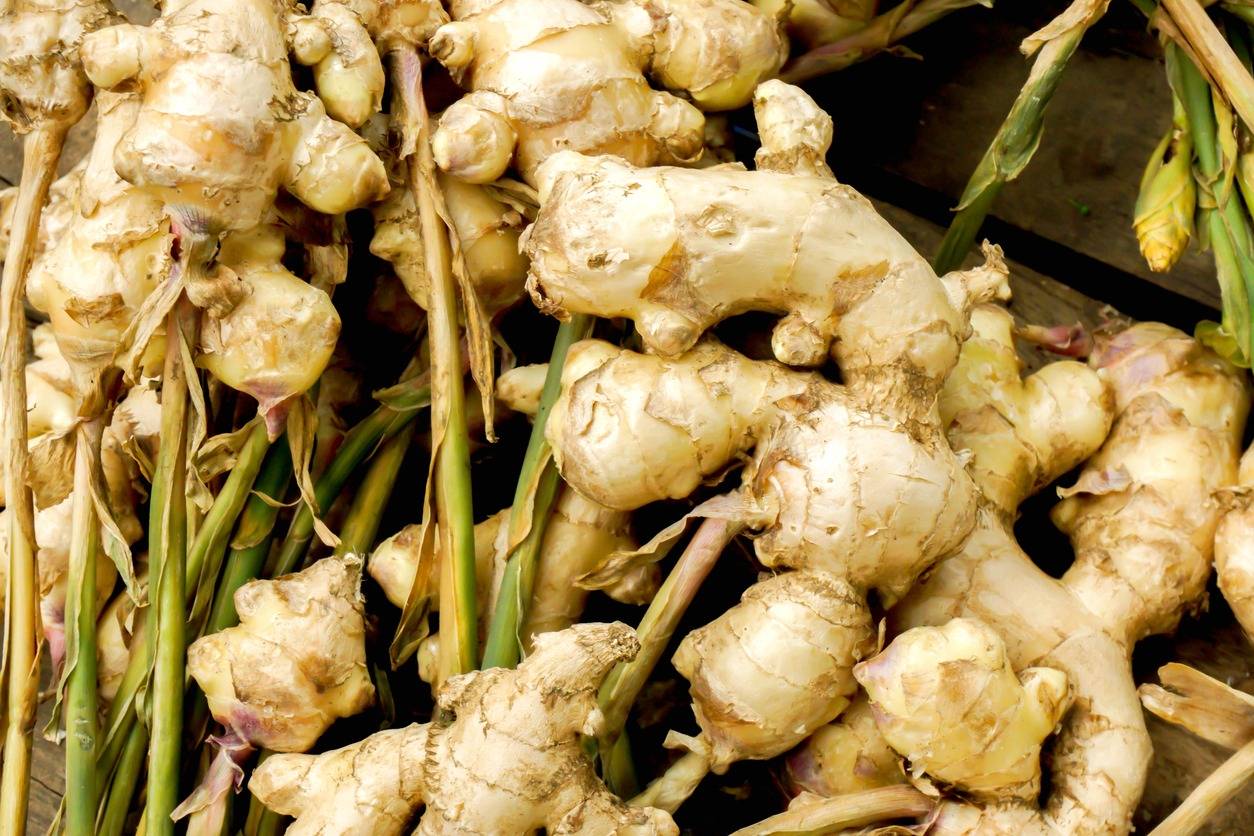
When selecting a ginger variety to grow in pots, you should consider the following:
- Common Ginger (Zingiber officinale): This is the most common variety used for culinary purposes.
- Baby Ginger: A less fibrous and milder-tasting variety, ideal for container gardening.
- Shell Ginger (Alpinia zerumbet): Known for its attractive foliage and aromatic flowers, it’s a good ornamental option.
2. Select a Suitable Container and Soil
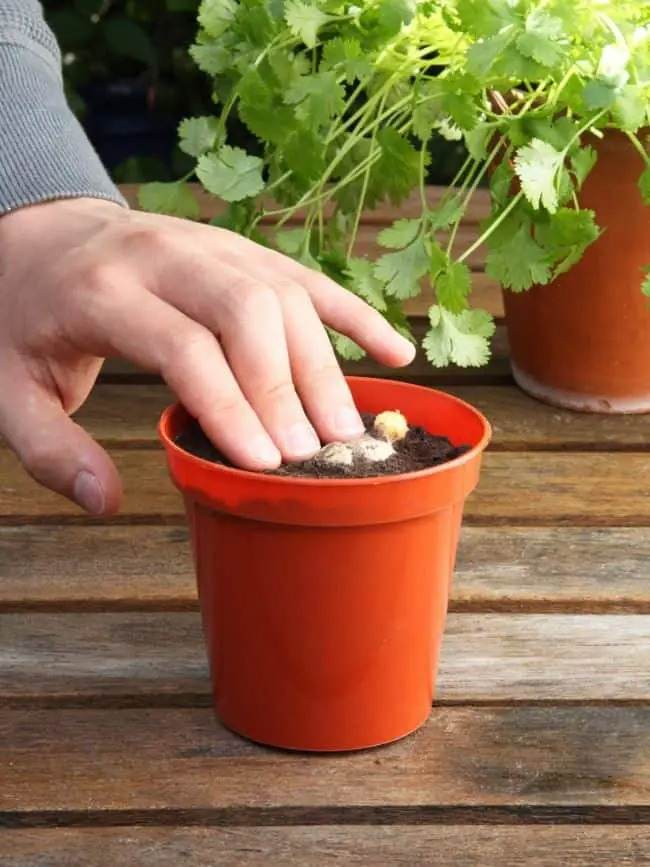
A large pot with good drainage is the most ideal. A depth of at least 12 inches (30 cm) is recommended to accommodate ginger’s shallow roots. When choosing soil, use a well-draining potting mix enriched with organic matter. A mix of potting soil, compost, and perlite is perfect.
3. Preparing Ginger Rhizomes
To get started, invest in fresh ginger rhizomes from an established supplier. Seek out robust, plump rhizomes with visible “eyes.” Larger rhizomes can be divided into smaller, each with a few eyes, and parts.
4. Planting
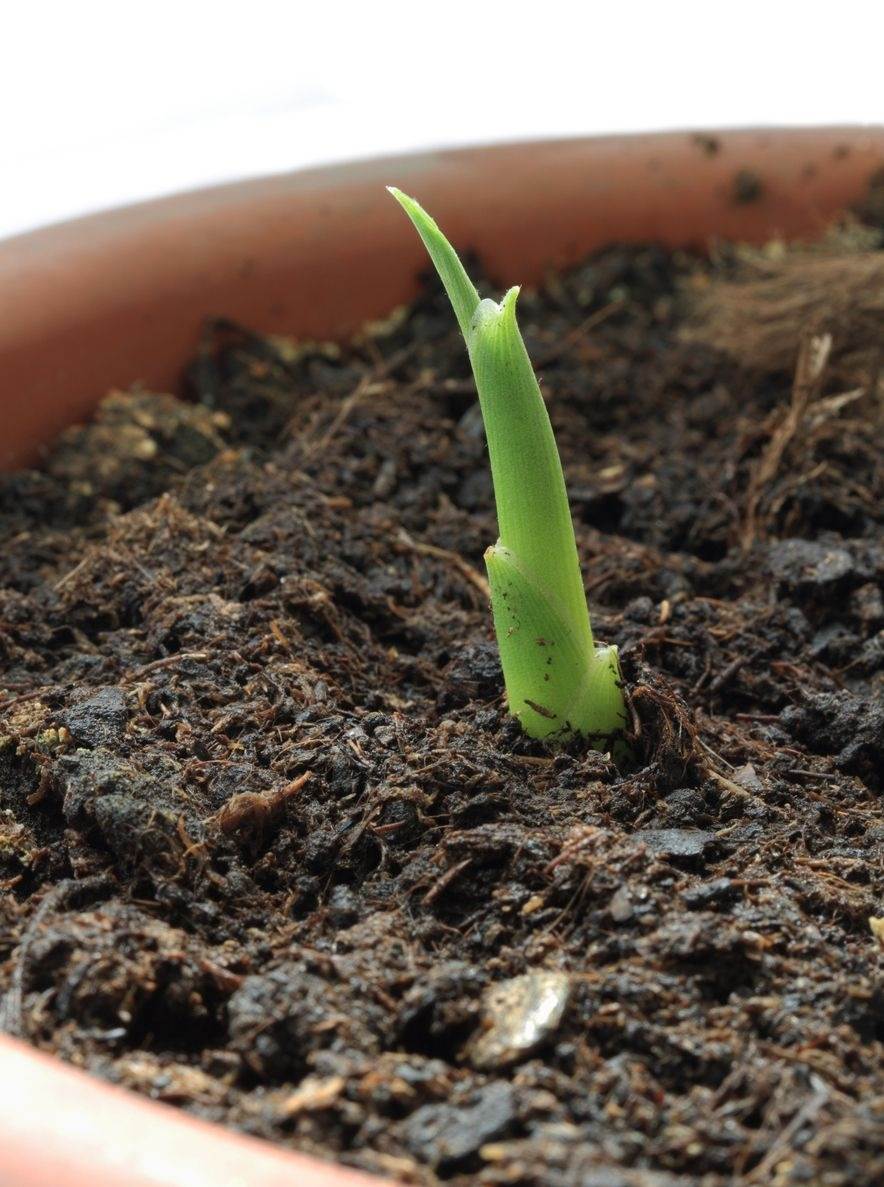
Plant ginger rhizomes with the eyes facing up, about 2-4 inches (5-10 cm) deep in the soil. Space them around 6-8 inches (15-20 cm) apart.
5. Watering
Your ginger should be kept consistently moist but not waterlogged. Occasionally, you can mist the leaves to provide humidity.
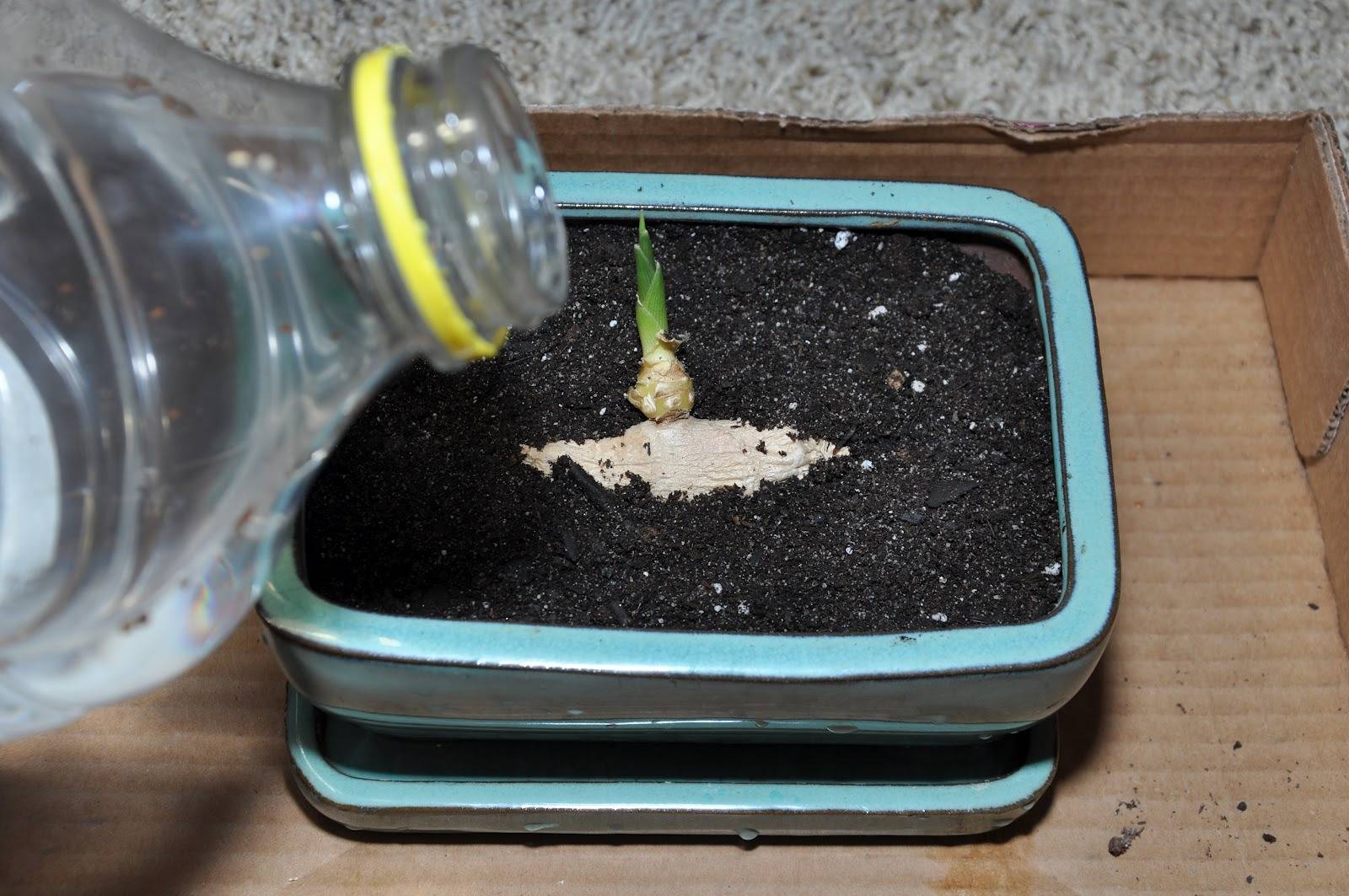
6. Temperature and Light
Ginger thrives in warm temperatures (around 75-85°F or 24-29°C) and bright, indirect sunlight. That’s why you should avoid direct sun, especially during the hottest part of the day.
7. Fertilization
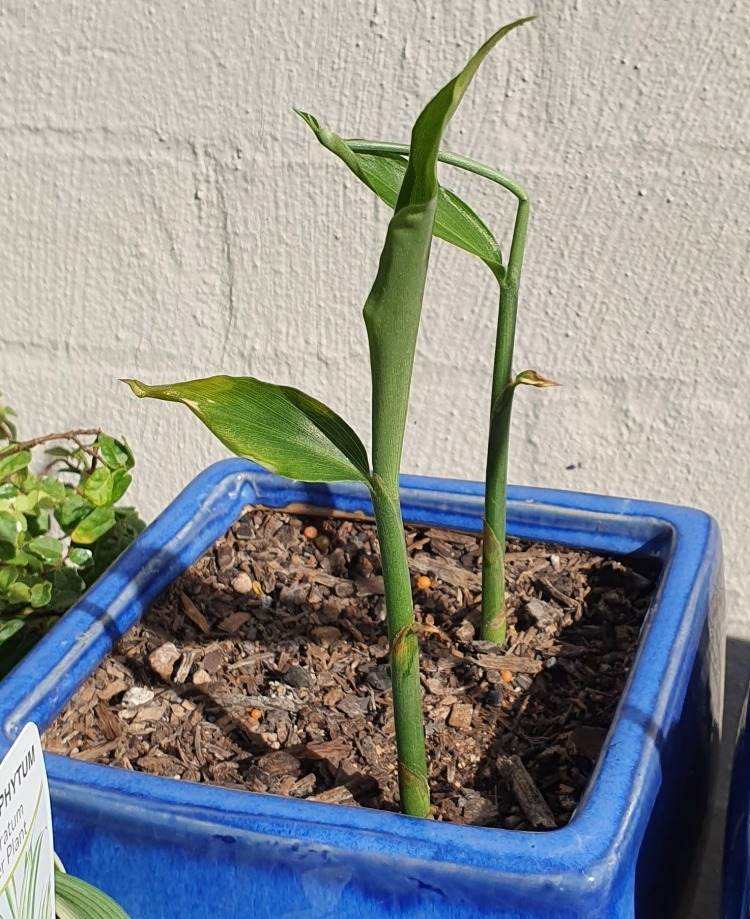
Feed your ginger plant with a balanced liquid fertilizer every 2-4 weeks during the growing season. This provides the essential nutrients for developing healthy leaves and rhizomes.
8. Container Maintenance
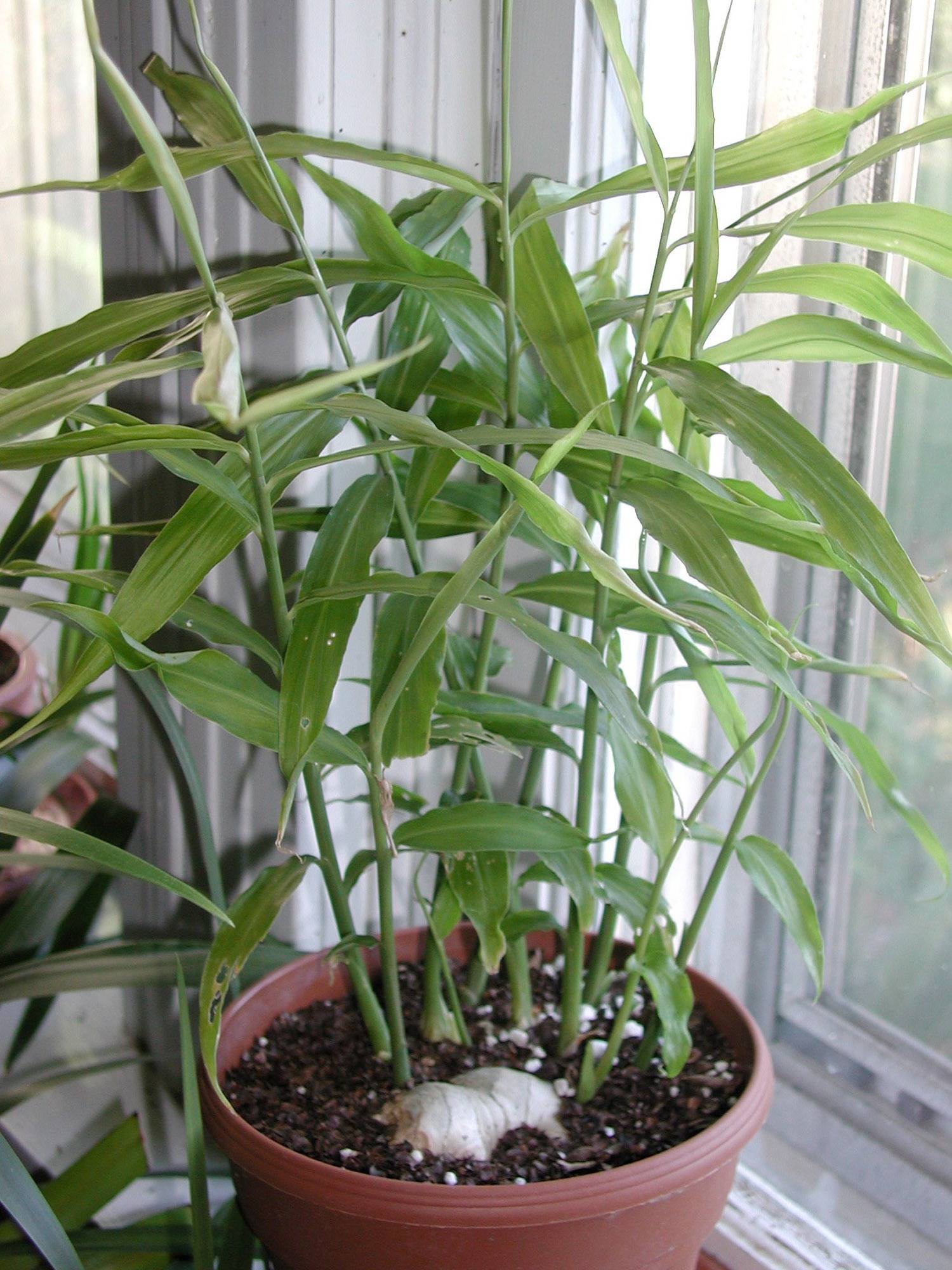
Ginger can become root-bound over time, so you might need to repot it every couple of years. When the plant becomes too large for its container, gently remove it, divide the rhizomes, and replant them in fresh soil.
9. Harvesting Ginger
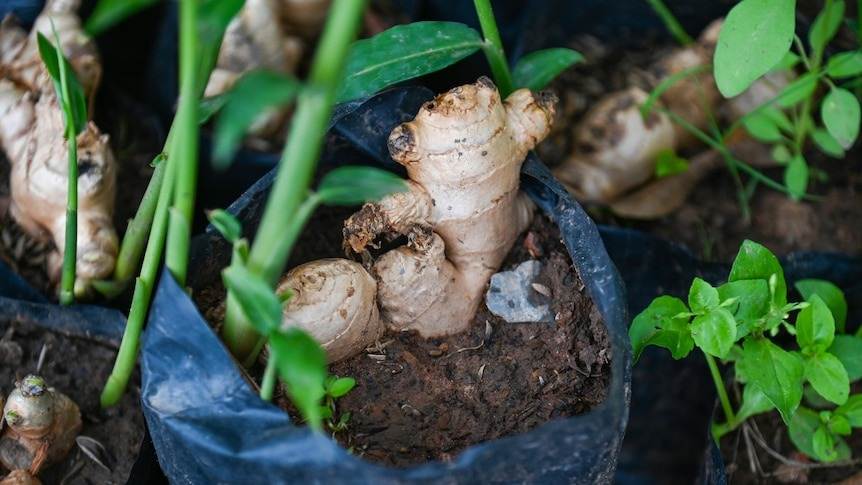
Ginger takes about 8-10 months to mature. It’s ready to be harvested when the plant’s growth slows down, the leaves start to turn yellow and die back.
When harvesting, gently lift the plant out of the pot then carefully separate the rhizomes from the soil. You should cut off the required amount of rhizome from the edges, leaving the central portion in the pot. This will allow the plant to continue growing.
10. Storing Ginger
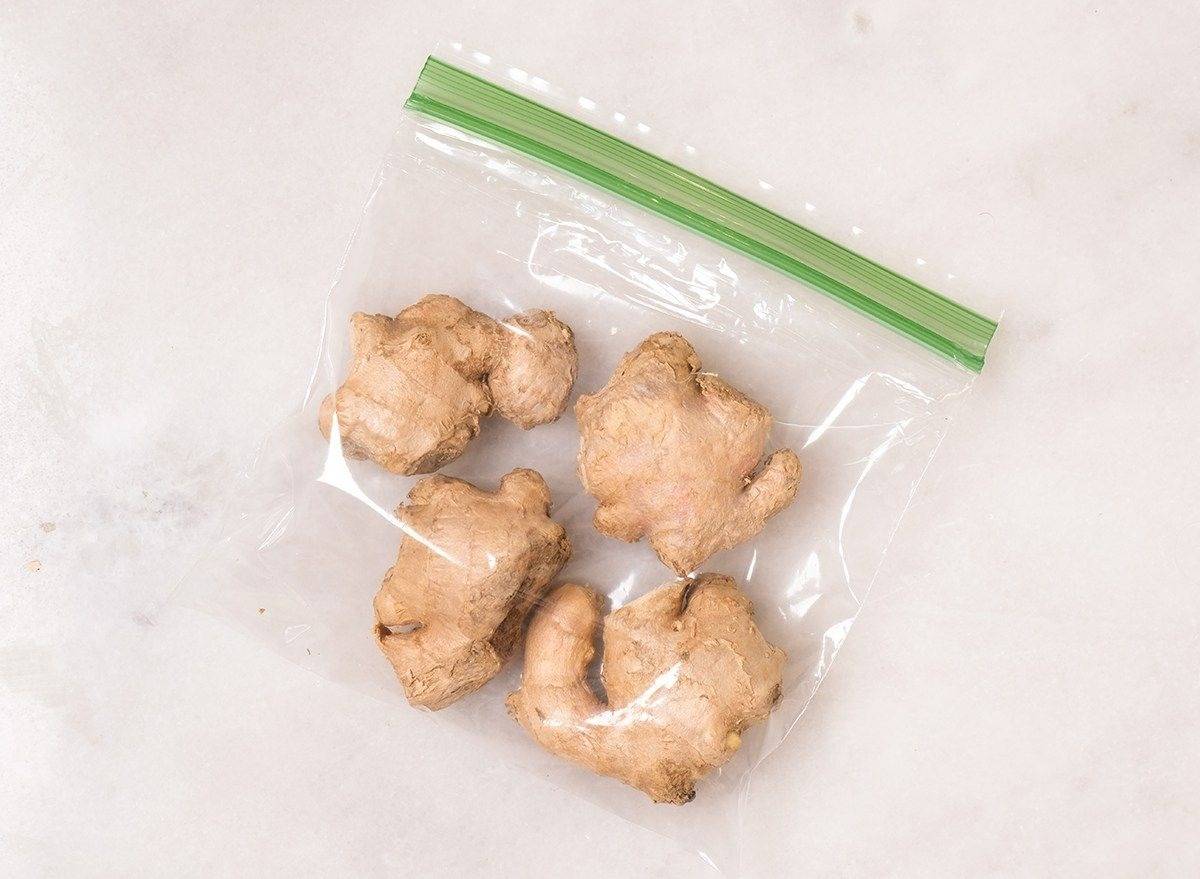
If you want to store ginger at room temperature, you can keep the whole, unpeeled ginger root in a dry and cool place, away from direct sunlight. For refrigerator storage, keep the whole, unpeeled ginger root in a resealable plastic bag, with the air pushed out, in the crisper drawer. This way, it can last up to 1 month.
